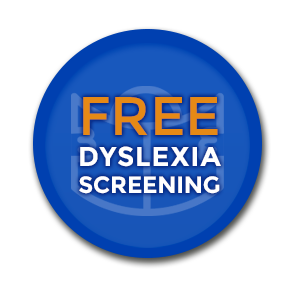Testing for Dyslexia
Learn about modern techniques for identifying dyslexia and compare them to the older, more traditional techniques.
The Discrepancy Method
Dyslexia is characterized by a difficulty in learning to read, but normal performance in other intellectual and academic areas. The discrepancy method of diagnosing dyslexia involves administering reading tests and general measures of intellectual performance (e.g., an IQ tests) and determining if there is a discrepancy between the two. That is, normal performance on the intelligence tests and poor performance on the reading test. The discrepancy procedure is the traditional way of identifying individuals with dyslexia. However, the discrepancy method has critical flaws and more modern procedures have been suggested as diagnostic procedures.
Response to Intervention (RTI)
Response to Intervention Is the procedure most commonly used in today’s school system and is the procedure recommended by federal legislation. RTI involves screening all children at the first-grade level to identify children who are deficient in skills (e.g., phonological awareness, letter naming letter sound naming) that are important for the development of skilled reading. These children are then separated from peers and given focused group instruction in missing skills. Typically, in the second grade another screening test is administered and children who remain well behind peers are given another round of intense instruction (called best practice instruction), perhaps involving one-on-one instruction with a reading professional. This more intense level of instruction may continue through the third grade. If after three years of best practice instruction the child still is well behind peers in reading development the child is diagnosed as having dyslexia.
Cognitive Profile Method
Another method for identifying dyslexia is the used in the Reading Success Lab software. This method involves a series of reading tasks and examination of the performance profile on the tasks. Here is an image of the cognitive profile diagnostic method:  The graph shows the grade level percentile performance of a typical dyslexic child. The child has normal performance on tasks that measures the speed and accuracy of identifying stars and plusses and letters of the alphabet. However, the speed and accuracy performance on tasks that measure word identification, nonword identification, word meaning, sentence understanding and reading comprehension are well below average for grade level. Notice, however, that listening comprehension is perfectly normal. The cognitive profile method can identify superior readers, average readers, poor readers who do not have dyslexia, readers who may have an attentional disorder, readers who may have a global cognitive deficit, and readers who likely have dyslexia.
The graph shows the grade level percentile performance of a typical dyslexic child. The child has normal performance on tasks that measures the speed and accuracy of identifying stars and plusses and letters of the alphabet. However, the speed and accuracy performance on tasks that measure word identification, nonword identification, word meaning, sentence understanding and reading comprehension are well below average for grade level. Notice, however, that listening comprehension is perfectly normal. The cognitive profile method can identify superior readers, average readers, poor readers who do not have dyslexia, readers who may have an attentional disorder, readers who may have a global cognitive deficit, and readers who likely have dyslexia.
Functional Magnetic Resonance Imagery (fMRI) Analyses
A final procedure that could be used to identify dyslexia is to take a child to a medical or research facility that can conduct fMRI analyses. fMRI is a medical technique that allows a researcher to see what parts of the brain are active when an individual is reading. Individuals with dyslexia typically have different patterns of brain activation than do normal readers, and this difference can be used to identify readers who are dyslexic At this time fMRI analysis is strictly a research procedure and is not used for diagnostic purposes.


 Facebook
Facebook
 Yelp
Yelp
